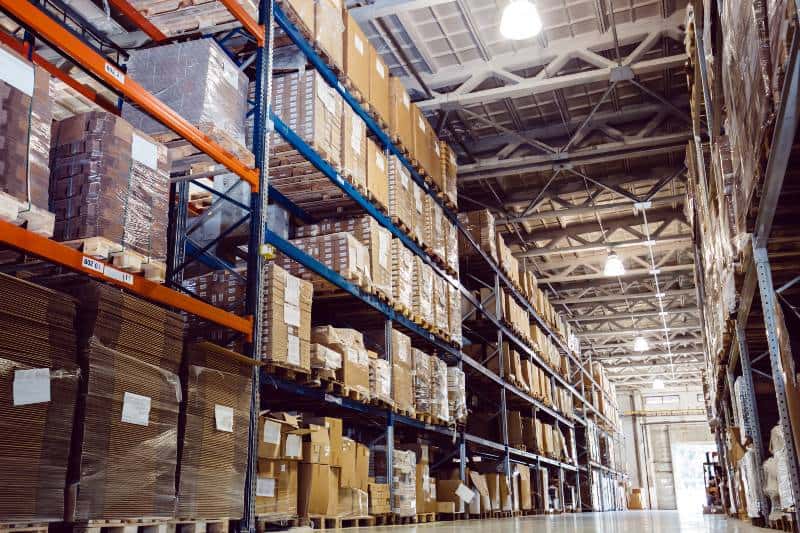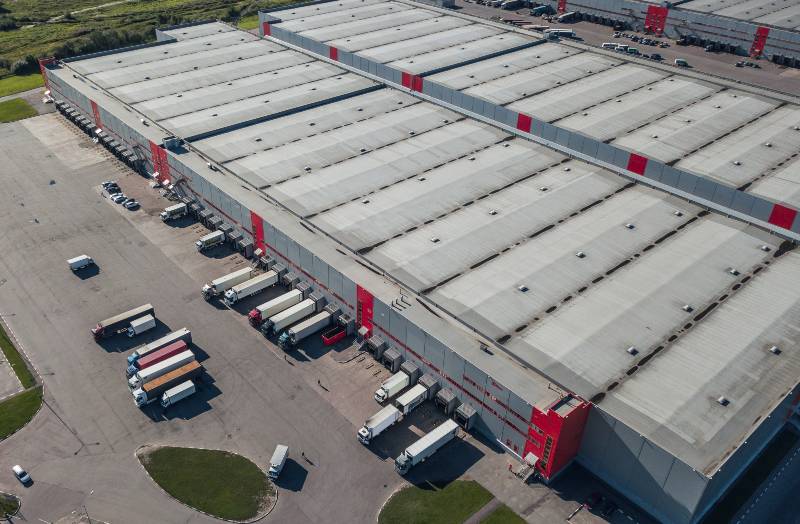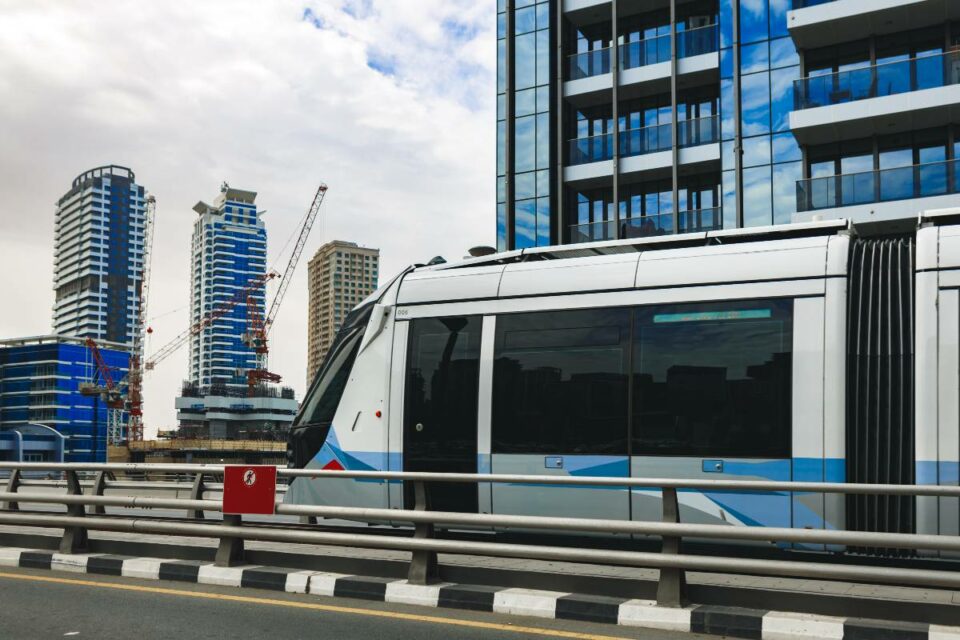Are you considering a commercial real estate project? If so, understanding logistics in industrial real estate is key to your success. Logistics optimization plays an important role in the selection and management of commercial sites for businesses large and small. From access to transportation corridors to building efficiency, the right location can not only save money but also increase productivity—advancing your business goals. In this blog post, we’ll delve into how logistics real estate plays into decisions regarding industrial commercial real estate projects as well as provide useful strategies for optimizing the process from start to finish. Read on for more information about leveraging best practices in logistics for optimal results when developing a property!
Logistics property encompasses purpose-built buildings for storage, order picking, and distribution. While some property landlords lease space to multiple tenants, larger organizations typically operate their own facilities tailored to their products and business processes.
Key Takeaways
- Logistics plays a critical role in industrial commercial real estate, influencing operations from warehousing and distribution to supply chain management.
- Technological advancements are significantly impacting logistics in industrial real estate, making it vital for companies to stay abreast of the latest trends and innovations.
- Global events such as the COVID-19 pandemic have underscored the importance of effective logistics, shaping the future of the industrial commercial real estate industrial sector.

Role of Logistics in Industrial Commercial Real Estate
Logistics plays a pivotal role in the success of industrial and commercial real estate (CRE), serving as the backbone that ensures the smooth operation of diverse businesses operating in such spaces. Let’s delve deeper into this topic, explain the impact of effective logistics, and uncover the inherent challenges and complexities involved.
To understand the role of logistics in industrial and commercial real estate, we must first clarify what logistics entails. Simply put, logistics is the management of the flow of goods, services, and information from the point of origin to the point of consumption. In the realm of industrial CRE, this could include anything from raw material acquisition to final product delivery and from inventory management to warehousing and distribution facilities.
Effective logistics plays an instrumental role in maximizing productivity, reducing costs, and enhancing customer satisfaction. An optimal logistics system can significantly boost the value of industrial and commercial real estate properties. For example, a manufacturing facility situated near major transportation routes (highways, rail lines, ports, etc.) can expedite the movement of goods, thus reducing transportation costs and time. Furthermore, well-designed warehousing and distribution centers can streamline inventory management, reducing waste and improving overall operational efficiency. This strategic positioning and functionality increase the property’s attractiveness to potential tenants, consequently enhancing its industrial market value.
From a broader perspective, a region with a robust logistics infrastructure tends to attract more businesses, leading to the development of industrial parks and commercial zones. This growth not only drives up the demand for industrial and commercial real estate but also stimulates job growth and economic development.
To illustrate, consider the rise of e-commerce giants like Amazon. Their demand for efficient logistics and fast delivery has fueled the development of vast distribution centers in strategic locations worldwide, driving local industrial real estate markets and creating thousands of jobs.
However, managing logistics in industrial and commercial real estate is not without its challenges and complexities. One major hurdle is the need for significant capital investment for infrastructure development. Developing roads, building warehouses, and setting up distribution centers – these all require a substantial outlay, which can be prohibitive, especially in regions with limited resources.
Moreover, logistics is a dynamic field.
It must adapt to ever-changing market trends, technological advancements, and consumer demands. This constant evolution poses a challenge for the real estate industry, which typically operates on long investment cycles. For instance, the recent surge in online shopping has pushed the demand for last-mile delivery facilities, forcing the real estate industry to quickly adapt to this new trend and build smaller, city-centric distribution centers instead of traditional large, rural warehouses.
Lastly, sustainability has become a major concern in logistics. With growing awareness about climate change and environmental degradation, businesses are being pushed to adopt greener logistics practices. This shift poses a new challenge for industrial and commercial real estate, requiring them to design and build facilities that support these practices. For example, this could involve investing in energy-efficient buildings, incorporating renewable energy sources, or even redesigning spaces to accommodate electric delivery vehicles.
Detailed Overview of Logistics in Commercial Real Estate
Warehousing and Distribution
Warehousing and distribution centers play a vital role in the logistics process, offering a centralized hub for the storage, processing, and distribution of goods. In the realm of commercial real estate, the design, size, location, and operational efficiency of these facilities have a significant impact on logistics operations. For example, strategically locating warehouses near key transportation routes and markets can lead to reduced transportation time and costs, thereby improving overall operational efficiency. Furthermore, the integration of advanced technologies, such as automated sorting systems and robotics, can enhance inventory management, processing speed, and accuracy within these facilities.
As a result, businesses increasingly seek commercial properties that can accommodate these sophisticated systems, which in turn, increases the value of these properties. For example, the rise of e-commerce has spurred a demand for large-scale fulfillment centers equipped with advanced sorting and packaging technologies, located strategically for fast and cost-effective delivery.
Transportation and Delivery
Transportation and delivery encompass the movement of goods from production facilities to warehouses, distribution centers, retail locations, and ultimately, to the consumer. Effective transportation and delivery strategies depend largely on the location of commercial real estate assets. Proximity to major transportation channels like highways, railroads, airports, or seaports significantly enhances the value of commercial properties, as this reduces transit times and costs. For instance, a factory located near a major shipping port can efficiently export its products globally, while a retail store situated near a major highway can expedite local deliveries.
Inventory Management
Inventory management involves the control of goods from the point of production to the point of sale, ensuring the right amount of stock is maintained to meet demand without excess. Commercial real estate properties play a significant role in supporting effective inventory management.
For example, warehouses with high ceilings and spacious layouts can facilitate vertical storage strategies, thereby optimizing the usage of space. Similarly, properties designed to accommodate technologies like RFID (Radio Frequency Identification) systems, automated storage and retrieval systems, or warehouse management software can enhance inventory tracking, management, and control.
Supply Chain Management
Supply chain management refers to the management of the flow of goods from raw materials to end products. It encompasses all the activities involved in sourcing, procurement, conversion, and logistics management. An efficient supply chain can reduce costs, improve service levels, and enhance competitiveness. The role of commercial real estate in supply chain management is to provide physical spaces that facilitate these activities. Strategic placement of manufacturing plants, distribution centers, and retail outlets can greatly enhance a supply chain’s efficiency.
For instance, an automotive company might strategically locate its manufacturing plant close to key suppliers to reduce transportation costs and time. Similarly, a retailer might locate its distribution centers near major market areas to ensure fast and efficient delivery to its stores.
Logistics in commercial real estate is an intricate network that connects warehousing and distribution, transportation and delivery, inventory management, and supply chain management. A strategic approach to integrating these elements within a commercial real estate portfolio can lead to significant enhancements in operational efficiency, cost management, and ultimately, business profitability.
Commercial real estate (CRE) plays a pivotal role in supporting and facilitating effective logistics operations. This symbiotic relationship is highly complex, involving various elements such as warehousing and distribution, transportation and delivery, inventory management, and supply chain management.
Each of these aspects is vital to the performance and efficiency of a commercial enterprise, directly influencing its profitability and sustainability. Let’s unpack each one of these components to understand their relation to commercial real estate.
To gain a deeper understanding of the Industrial real estate sector, I highly recommend taking the time to read this insightful article on Industrial CRE Leasing Trends: Future-Proofing Spaces. This article delves into the latest trends and strategies in the industry, providing valuable insights to help you navigate and make informed decisions in this evolving market.
Technology in Logistics and Industrial Real Estate
Technology is undeniably transforming the landscape of logistics and industrial real estate. With each wave of technological innovation, the industrial real estate sector is becoming more efficient, responsive, and sustainable. Let’s explore the current technologies impacting logistics and industrial real estate and then shift our focus to the anticipated future trends in this area.
Current Technologies Impacting Logistics and Industrial Real Estate:
- Automation and Robotics: Automation technologies and robotics are becoming increasingly prevalent in warehouses and distribution centers. They enhance productivity, reduce human error, and can operate around the clock. Automated Storage and Retrieval Systems (AS/RS), for example, can handle tasks such as retrieving, sorting, and placing goods at a speed and precision level difficult for humans to match. Robotics, like autonomous mobile robots (AMRs), can carry out tasks like picking and transporting items within a warehouse.
- Internet of Things (IoT): IoT devices are used to monitor and manage inventory, equipment, and operations. Sensors can track real-time data on warehouse conditions, goods in transit, and equipment health. This data is then used to optimize operations, improve maintenance routines, and enhance decision-making.
- Artificial Intelligence (AI) and Machine Learning (ML): AI and ML are used to analyze large volumes of data to gain insights, make predictions, and automate decision-making. For instance, AI can forecast demand, optimize routes, and manage inventories, leading to significant cost savings and efficiency gains.
- Blockchain: Blockchain technology can enhance transparency, traceability, and security in the supply chain. It creates a decentralized and immutable ledger of all transactions, making it easier to track and authenticate goods.
- Cloud Computing: Cloud-based systems allow for real-time tracking, analytics, and communication across the entire supply chain. They provide scalability, flexibility, and access to advanced software solutions without hefty infrastructure investments.
Future Trends in Technology for Logistics and Industrial Real Estate:
- Advanced Analytics and Big Data: As technology evolves, businesses will have access to increasingly large amounts of data. Advanced analytics and big data will play a key role in harnessing this data to gain deeper insights, make accurate predictions, and make more informed decisions.
- Autonomous Vehicles: Autonomous vehicles, including trucks, drones, and even ships, have the potential to transform transportation and delivery. They can operate continuously and are expected to reduce costs and increase efficiency.
- 5G and Beyond: The rollout of 5G technology and the eventual development of even faster networks will enable real-time data transmission, improving the effectiveness of IoT, AI, and cloud computing in logistics operations.
- Sustainable Technology: With the increasing focus on environmental sustainability, technologies that reduce the carbon footprint of logistics operations will become more prominent. This could include energy-efficient buildings, electric vehicles, and renewable energy sources.
- Digital Twins: Digital twins, or virtual replicas of physical systems, will enable businesses to simulate and optimize logistics operations. This could lead to better warehouse layout designs, more efficient transportation routes, and improved supply chain strategies.
Case Studies
Let’s delve into a couple of case studies that highlight the successful application of logistics management in the context of industrial commercial real estate.
Case Study 1: Amazon’s Distribution Network
Amazon, the e-commerce behemoth, presents a clear case of the successful marriage between logistics management and industrial commercial real estate. Over the years, Amazon has continuously fine-tuned its logistics model, with warehouses (Amazon calls them “fulfillment centers”) playing a key role in its success.
One of Amazon’s strategic moves was to increase the number of fulfillment centers spread across diverse geographic regions. By having multiple warehouses closer to customers, Amazon was able to reduce shipping times and costs, leading to a significant competitive advantage. This strategy also changed the landscape of industrial real estate, driving demand for large warehouses in both urban and suburban areas.
Moreover, Amazon has been a leader in integrating automation and robotics in their facilities to enhance efficiency and speed up the order fulfillment process. Their acquisition of Kiva Systems, a robotics company, and subsequent deployment of thousands of robots in their warehouses illustrates their commitment to technological innovation.
Lessons Learned:
- The strategic location of warehouses can significantly impact delivery times and costs.
- Automation can greatly enhance efficiency and speed in the warehousing and distribution process.
- The scale and efficiency of Amazon’s logistics operations have set new industry standards, which many companies strive to match.
Case Study 2: Walmart’s Cross-Docking Logistics Strategy
Another enlightening case study comes from Walmart, the multinational retail corporation. Walmart has been known for its mastery of supply chain logistics, with a pivotal element being its cross-docking logistics strategy. Cross-docking involves unloading incoming goods directly onto outbound trucks at their distribution centers, with the goal of minimizing storage time and costs.
This strategy has allowed Walmart to keep inventory and warehousing costs low while ensuring that their stores are consistently stocked with the products their customers want. In doing so, Walmart not only changed its logistics operations but also impacted the design and operation of industrial real estate properties, emphasizing the need for efficient, high-capacity cross-dock facilities.
Lessons Learned:
- Innovative logistics strategies, such as cross-docking, can result in significant cost savings and efficiencies.
- The design and layout of warehouses and distribution centers should align with the specific logistics strategies employed by the business.
- A well-optimized supply chain can give a company a substantial competitive edge.
Both Amazon and Walmart offer insightful examples of how strategic logistics management, when coupled with thoughtful utilization of industrial commercial real estate, can lead to significant operational advantages. Their successes underscore the importance of a well-considered logistics strategy that integrates warehouse location, design, technology, and operation to meet the specific needs of the business.
Impact of COVID-19 on Logistics in Commercial Real Estate
The COVID-19 pandemic has had a profound impact on every facet of our lives, and the logistics and commercial real estate sectors have been no exception. The unprecedented disruption of global supply chains, changes in consumer behavior, and implementation of safety protocols have all shaped the operations in these sectors. Below, we’ll explore some key shifts and future implications.
Changes in Operations:
- Acceleration of E-commerce: With lockdowns and social distancing measures in place, the pandemic accelerated the already growing trend of e-commerce. As more consumers turned to online shopping, businesses had to adapt their logistics operations to keep up with increased demand. This has driven a surge in demand for warehouses and distribution centers, especially in locations closer to consumers to facilitate faster delivery.
- Shift to Contactless Delivery: To minimize the risk of virus transmission, businesses quickly adapted to contactless delivery models. This necessitated changes in the logistics process, such as new packing procedures and technologies to facilitate safe, contactless delivery.
- Increased Stockpiling: The uncertainty and supply chain disruptions caused by the pandemic led many businesses to increase their inventory levels to buffer against potential future disruptions. This led to increased demand for warehouse space.
- Implementation of Safety Measures: Warehouses and other facilities had to implement new safety measures, such as social distancing protocols, sanitation procedures, and health screenings. These measures often required changes to warehouse layouts and processes.
Future Implications:
- Rise in Nearshoring and Reshoring: The pandemic exposed the vulnerabilities of extended global supply chains. In response, many businesses are considering nearshoring or reshoring their operations – i.e., bringing them closer to home. This could reshape the landscape of industrial real estate, with increased demand in certain markets.
- Greater Emphasis on Supply Chain Resilience: The experience of sudden, massive disruptions will likely lead businesses to place more emphasis on building resilient supply chains. This might mean diversifying suppliers, increasing inventory levels, or investing in technologies that improve supply chain visibility and flexibility. These trends could influence the size, location, and design of future warehouses and distribution centers.
- Increased Adoption of Technology: The pandemic has underscored the value of technologies like automation, robotics, and digital platforms in maintaining operations during crises. This trend is expected to continue, with potential implications for the design and operation of commercial real estate facilities.
- Sustainable and Health-Conscious Design: In the wake of COVID-19, there is likely to be an increased focus on sustainable, health-conscious designs for warehouses and other facilities. This could include enhanced ventilation systems, touchless technologies, and layouts that facilitate social distancing.
The COVID-19 pandemic has had a significant impact on logistics and commercial real estate, necessitating adaptations and innovations that will likely shape the sector in the future. Businesses and real estate professionals must remain adaptable and forward-thinking, prepared to navigate a post-pandemic world characterized by evolving consumer behaviors, supply chain strategies, and design considerations.

Logistics In Industrial Commercial Real Estate FAQs
How has COVID-19 impacted logistics in industrial commercial real estate?
The ongoing pandemic poses significant challenges to global supply chains. Even in 2022, national lockdowns continue to impede the smooth flow of raw materials and finished goods, causing disruptions in manufacturing. It is important to note, however, that the pandemic has not introduced any new challenges to supply chains.
What are the future implications of COVID-19 on this sector?
Apart from posing a risk to public health, the pandemic brings about economic and social disruptions that jeopardize the long-term prosperity and welfare of countless individuals. Labor emerging markets, economies, and enterprises, including global supply chains, bear the brunt of its impact, resulting in extensive business interruptions.
What’s the relationship between supply chain management and industrial real estate?
Supply chain management is a crucial aspect of any business that wants to maintain efficiency and profitability. One important factor in this aspect is having a well-functioning industrial real estate. This is because the industrial real estate market plays a significant role in the global supply chain management process.
It provides a space where goods can be stored, assembled, and distributed to retailers, wholesalers, or directly to consumers. In other words, the right industrial real estate can support a company’s modern supply chain management operations effectively. From building warehouses and distribution centers to finding transportation hubs and intermodal terminals, the location and design of industrial real estate can significantly impact a business’s overall success.
Conclusion
Companies need to understand how logistics within industrial real estate can support their operations or present new opportunities. With the right strategies in place to capitalize on logistics, organizations can improve processes, boost productivity and performance, and increase returns.
At the same time, if careful attention is not paid to logistics, the opposite can occur for businesses and render a competitive disadvantage. With technological advancements continuously being introduced into this industry, staying up-to-date is essential for success.
The pandemic has demonstrated that timely responding to global issues and managing operations proactively will be an integral part of thriving in industrial real estate moving forward. If you are ready to take your business’s commercial and industrial real estate needs seriously – from logistics management to global trends – give me a call or schedule a free consultation today so I can assist you in creating a solution, I’d be really glad to help you out.




